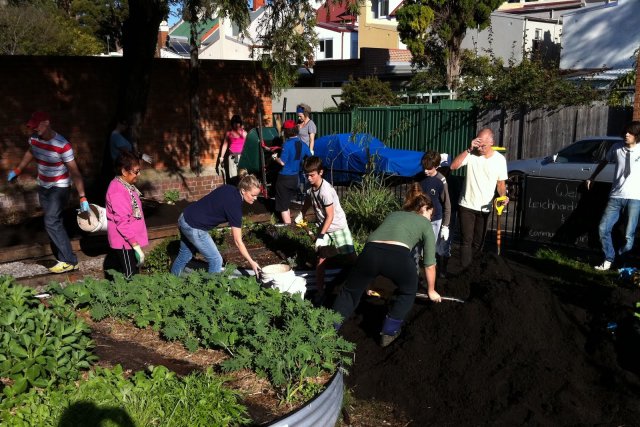
Community gardeners were stunned when AusVeg, the peak body for the vegetable industry, publicly welcomed the federal government’s cut in funding the Food Grants Program.
Mentioning “biosecurity risks” and “food safety concerns”, AusVeg spokesperson William Churchill said the program “has been identified as a potential risk to the national horticulture industry”.
The Australian Food Sovereignty Alliance (AFSA) responded, "The peak body singled out community gardens, which was only one category of the many potential beneficiaries of the axed grant. The other beneficiaries would have included farmers markets, food hubs, community supported agriculture, community food kitchens, food rescue organisations, and more.”
It reminds me of our experiences when we ventured into developing the first community garden on the Central Coast about 10 years ago.
It was met with criticism from locals who were fearful the garden would attract rats, wasps and other sinister creatures that may threaten the environment. Their voice was stronger than ours and it took three years to convince the council that a bunch of gardening enthusiasts and community development workers would not create a threat to the environment nor the local growers’ trade.
It seems AusVeg have gone back in time and feel threatened by some of the more flourishing gardens that may make a few dollars at a local market.
Community gardens have sprung up in response to an increase in urban sprawl, crime, social isolation and an aging population. More recently, community gardens have been linked to growing world issues such as climate change and food sustainability.
The essence of community gardens is to provide recreation, a safe place to socialise and learn new skills, share ideas and, if successful, compare sizes of zucchinis.
They are teaching grounds for TAFE and high school students and have been predominantly developed to provide a place to socialise and give back to the community.
Additionally, disused spaces that attract low-level crime such as graffiti and vandalism have been activated, reducing crime and the likelihood of crime escalating. Community gardens also provide the habitat to regreen unused land, attract native flora and fauna and the opportunity to recycle, compost and develop worm farms.
The long-term effect is improved individual mental and social wellbeing and a more vibrant, safe, connected community.
The AFSA said in a statement: “Contrary to what appears to be baseless scaremongering, community and fair food projects are not risky. They are the fastest growing food sector in Australia according to the Australian Bureau of Agricultural and Resource Economics and Sciences. They enjoy massive and growing community support.
“According to national survey research carried out for AFSA by the Australia Institute in 2012, 53% of all Australian adults grow or raise some of their own food and nine percent of all adults participate in community gardening or a related form of community food production. Of the 53% that grow or raise some of their own food, nearly a fifth — 19% — had begun doing so in the last 12 months.”
All community gardens are different and have grown from the interests of the community members who have developed them. They have legal and ethical structures in place and a communal interest. They pose no more threat to the environment through pests than the vegetable garden that people have in their backyards or the beautiful home gardens that people take pride in.
A survey by AusVeg found in March that Australians only eat half of the recommended daily vegetable intake and that children are consuming less than recommended by the National Health and Medical Research Council.
Recently, we applied for a Food Grant to develop a vegetable garden between our local primary school and community centre with the view to teach children healthy eating and to address the increasing obesity problem in Australia.
A garden in a residential area does not pose any risk to agricultural farmers and I question whether there is any research that supports that notion. Drought and climate change are far bigger demons threatening growers in Australia than a slightly increased bee population resulting from a community garden.
Community gardens are being demonised to divert attention away from the real threats to agriculture such as climate change, controlling introduced species and disease, genetically modified organisms, the Woolworths and Coles monopoly and corporate privatisation and outsourcing.
If AusVeg believes community gardens are a threat, it would make more sense to support community gardens by providing expertise to local growers on how to minimise biodiversity risks. The $1.5 million cut from the Food Grant program could instead be invested into university research, developing knowledge for the future or filling the skill shortage in the industry.
Churchill has no substance to his argument and this is really another excuse for the Coalition’s cost cutting, which inevitably impact the communities that need it the most. This is just another example of many pre-election funding pools that have disappeared into a black abyss never to be seen again.
[Jillian Hogan is the manager of San Remo Neighbourhood Centre, Central Coast NSW.]